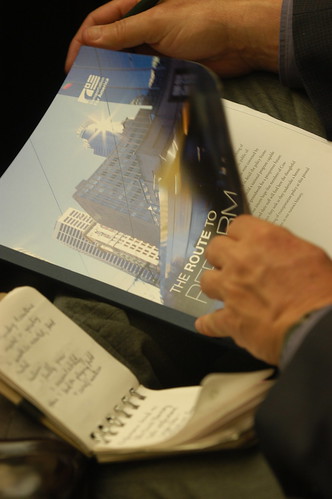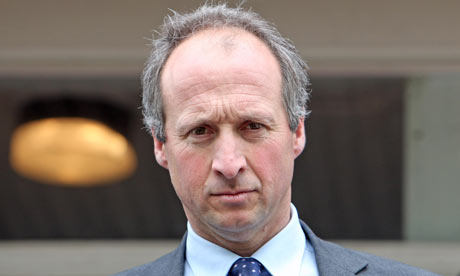Secretary. Ray LaHood takes exception to AP report on road stimulus job locations
(Source: TheTrucker.com & AP)
Secretary of Transportation Ray LaHood took exception to an Associated Press articlethat reported that counties suffering the most from job losses stand to receive the least help from President Barack Obama’s plan to spend billions of stimulus dollars on roads and bridges, an Associated Press analysis has found. Although the intent of the money is to put people back to work, AP’s review of more than 5,500 planned transportation projects nationwide reveals that states are planning to spend the stimulus in communities where jobless rates are already lower.

Image Courtesy: AP - U.S. map shows amount of stimulus funds announced for transportation, by county
Altogether, the government is set to spend 50 percent more per person in areas with the lowest unemployment than it will in communities with the highest.
The AP reviewed $18.9 billion in projects, the most complete picture available of where states plan to spend the first wave of highway money. The projects account for about half of the $38 billion set aside for states and local governments to spend on roads, bridges and infrastructure in the stimulus plan.
The very promise that Obama made, to spend money quickly and create jobs, is locking out many struggling communities needing those jobs.
The money goes to projects ready to start. But many struggling communities don’t have projects waiting on a shelf. They couldn’t afford the millions of dollars for preparation and plans that often is required.
“At the DOT, we have $48 billion to rebuild roads, bridges, highways, airport runways, ports and transit projects,” LaHood wrote. “And we have already signed off on transportation projects in all 50 states. Just 12 weeks after President Obama signed the American Recovery and Reinvestment Act into law, we have approved 2,800 road projects and another 300 airport projects.”
LaHood said that amounted to over $10 billion “out the door and countless Americans going back to work.”
By this summer, LaHood wrote, Americans won’t be able to drive down the street without seeing people working at good-paying jobs.
He attributed those jobs to the Recovery Act money.
“Unfortunately, the AP’s analysis is misguided,” LaHood said. “Its reporters looked at 5,500 transportation projects from state lists and concluded that the transportation money is going to counties with low unemployment. But until the states make a request and the experts at the DOT certify that a project meets the criteria for Recovery dollars, those lists are not the final word.
 “Basically, their (the Associated Press’) work amounts to nothing more than an academic exercise.”
“Basically, their (the Associated Press’) work amounts to nothing more than an academic exercise.”
For people who are out of work and at risk of losing their jobs, this construction work is a godsend, LaHood said he believed.
“Sadly, unemployed workers can be found all over our nation in these difficult economic times — even in counties that don’t have the highest unemployment rates,” the secretary wrote
“Governmental boundaries are often arbitrary, and workers know that,” LaHood noted. “People who work construction jobs often drive to wherever they can find work in a metropolitan area or region. Our idea is to drive down unemployment, period.”
LaHood said he told Brett Blackledge, the Associated Press writer who authored the story, about a recent trip he took to New Hampshire for a groundbreaking on highway 101.
“I shook hands with men and women who are going back to work thanks to the Recovery Act,” LaHood said. ”One man told me that he drives all over New England for construction jobs. Another said he is the father of four children and was unemployed until this project began. Now that he has this job, he will be commuting from Wolfeboro.
“Unfortunately, Brett didn’t think it was worth quoting me when I told him that the point of the program is to put people to work. And that’s something I’m proud of.”








